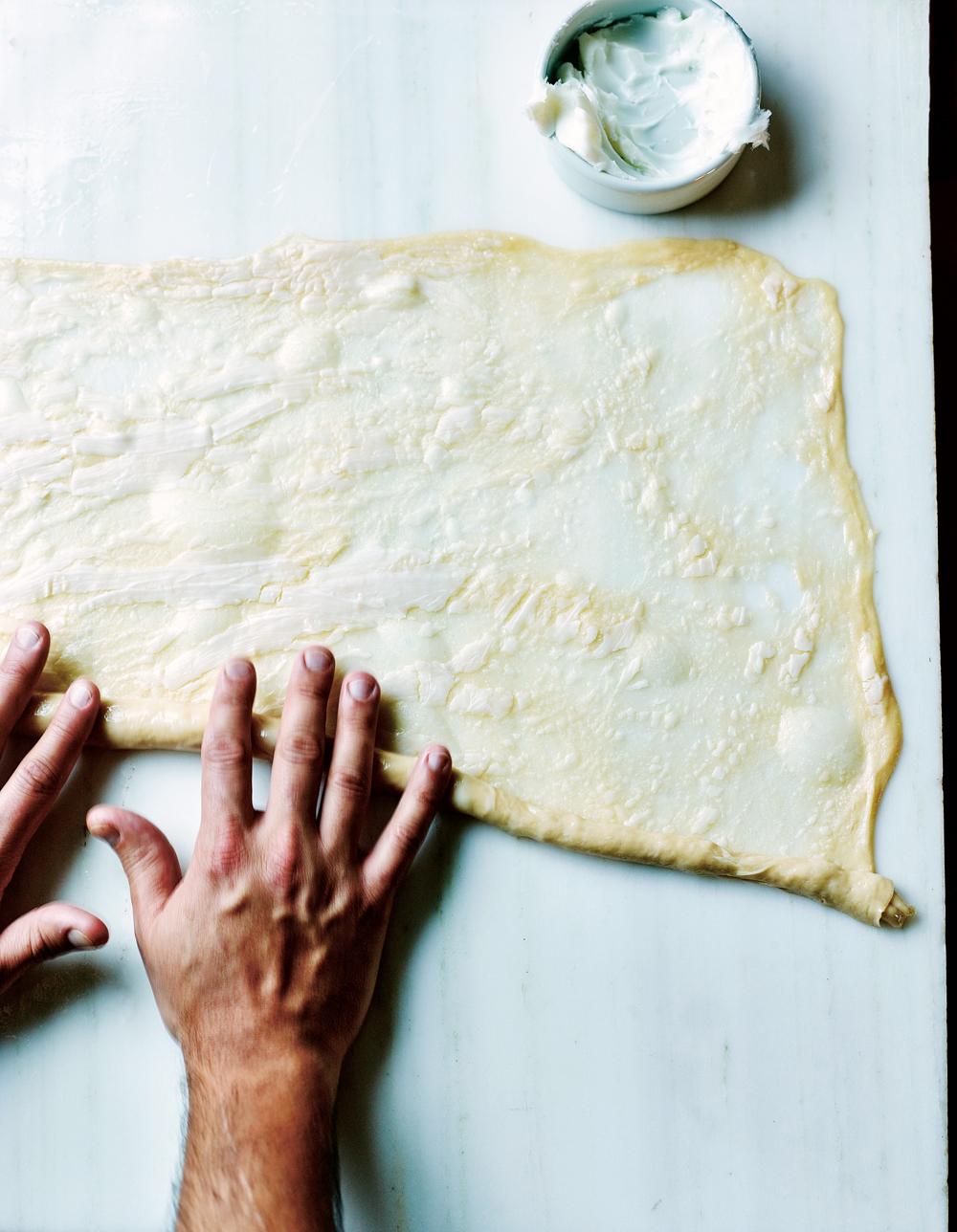How to make (Rolled flaky pastry) Ensaimada mallorquina
Spanish celebrity chef Omar Allibhoy shows how to make this iconic Spanish pastry
In this video, Tapas Revolution chef Omar Allibhoy shows how to make ensaimada – a coil-shaped flaky pastry that can be enjoyed at breakfast, snack time and dessert.
Originating from Mallorca, ensaimada is a commonly eaten in most former Spanish territories in Latin America and in the Philippines.
Omar said: “This is one of the most iconic pastries in Spain. It has earned such a renowned status because it is delicious, not just in flavour but in texture, too.
“The secret is in the way the pastry is made. By rolling it over itself, you achieve really thin layers once it’s baked (like a croissant) and it’s a treat to dig into.”
“Ensaimada is traditionally eaten with icing sugar on top, but you can put fillings like sobrasada (chorizo paste), custard or whipped cream,” he added.
How to make (Rolled flaky pastry) Ensaimada mallorquina
Serves 4
Ingredients
7g (scant 1 tsp) dried yeast or if using fresh yeast 16g
200g (1 cup) caster (superfine) sugar
2 medium eggs
600g (4¼ cups) very strong flour
Pinch of salt
100g (scant ½ cup) lard
3 tbsp icing (confectioners’) sugar
Vegetable oil, for greasing
Optional fillings
50g (2oz) Sobrasada de Mallorca mixed
With 50g (scant ¼ cup) lard
or
200ml (¾ cup) whipped cream or crème pâtissière
Method
Pour 230ml (1 cup) water into a bowl and add the dried yeast. Allow to dilute and then add the caster sugar, eggs, flour and salt. Mix together to form a dough and then knead for a good 15 minutes, until the dough is so elastic you can almost see through it if stretched.
Set aside to rest for 30 minutes, then cut into 4 equal pieces and leave to rest for another 30 minutes.
Grease the work surface and a rolling pin with vegetable oil.
Flatten one of the dough portions against the worktop with the palm of your hand and roll it out to a very thin rectangle about 20 x 60cm (8 x 24in). Let rest for 2 minutes while you spread a quarter of the lard over it with your fingers.
Now, grab a corner of the flattened dough and stretch it out as far as it will go without breaking and repeat every 10cm (4in) or so around the dough in every direction until you have a rectangle about 50 x 70cm (20 x 28in).

Cut a 5-cm (2-in) strip from one of the long sides of the rectangle and place it over the end of the perpendicular side of the rectangle (this is what we call the heart of the ensaimada).
Since this style of dough, like pizza dough, is always slightly thicker around the edges, it helps to have an extra layer of dough in the very heart of the pastry to provide some extra thickness.
Additionally, when it bakes, the heart remains doughy and moist.
Wrap a thin layer of dough over the heart and keep rolling it over itself until you have a long pastry snake.
Repeat with the remaining portions of dough.
Grab the first roll of pastry you made and stretch it until it is over a metre (40in) long. Then roll it up in a spiral, leaving 1cm (½in) between each spiral.
Flatten a little and transfer to a baking sheet lined with baking parchment. Repeat with the remaining pastries.
Leave in a humid, fresh (14°C/57°F) and enclosed environment for no more than 12 hours. You will know it is ready when the pastry coils have risen and expanded enough to stick together.
When you are ready to start baking, preheat the oven to 200°C/400°F/gas mark 6.
Put the baking sheet in the top third of the oven and immediately lower the temperature to 180°C/350°F/gas mark 4.
Bake the pastries for about 15 minutes with heat top and bottom and the fan running, until the pastries are a dark golden colour.
Cool on a wire rack and then dust with a generous amount of icing sugar.
If you want to fill your pastry with Sobrasada de Mallorca, use the Sobrasada-lard paste in the same way we used the lard in the main recipe method. It gives a fantastic savoury result.
To fill your ensaimada with whipped cream or crème pâtissière, cut open the baked pastry, spread it with the cream, sprinkle with sugar and caramelize with a blow torch before closing.
Omar has two cookbooks. Spanish Made Simple: Foolproof Spanish Recipes For Every Day (Quadrille) and Tapas Revolution: 120 Simple Classic Spanish Recipes (Ebury Press). Photography: Martin Poole
Bookmark popover
Removed from bookmarks